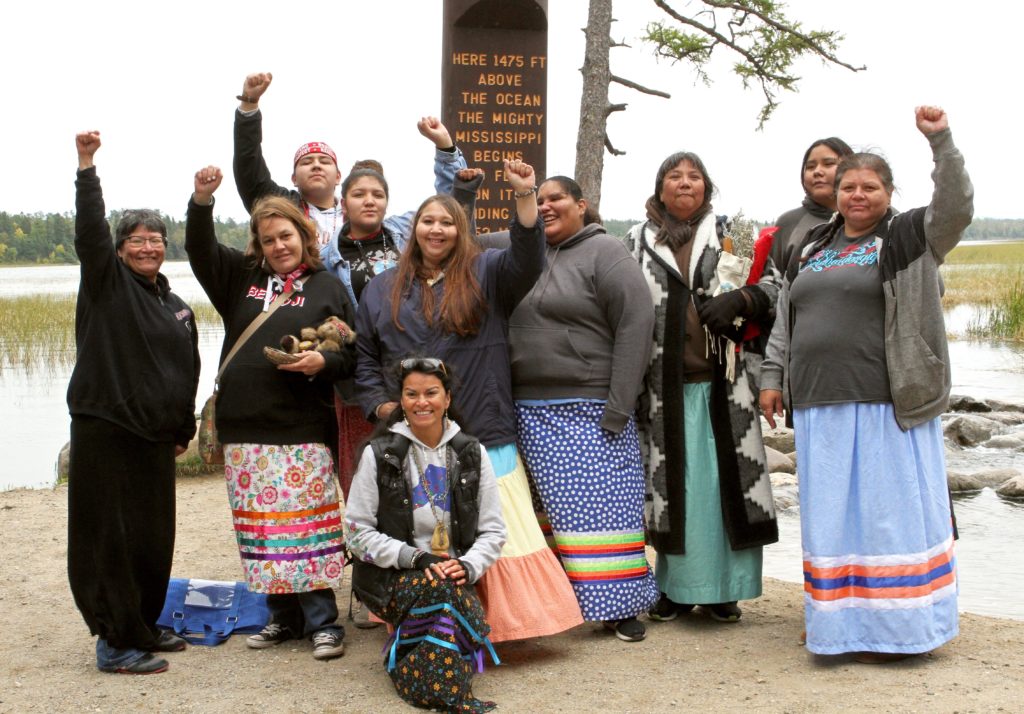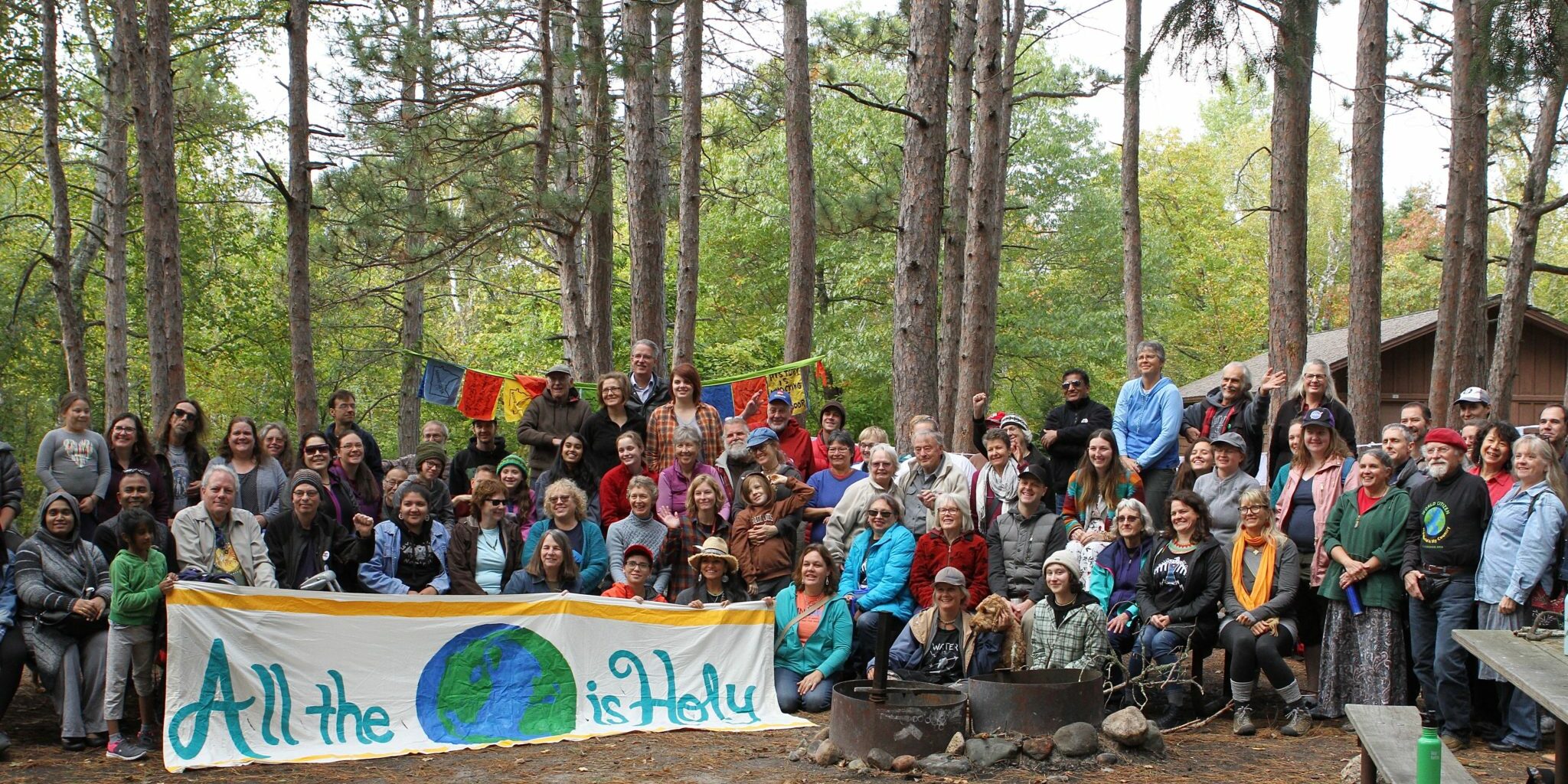Protecting the Sacred: A Gathering at the Headwaters
On September 21-23rd, 2018, we came together at the invitation of water protectors, and in collaboration with Honor the Earth and the Minnesota Council of Churches, to honor the sacred headwaters and to urge decision makers to block Line 3. On Sunday, we gathered for an indigenous-led interfaith vigil at the Mississippi Headwaters where leaders across faith traditions affirmed the sacred nature of water and our moral commitment to protecting life.
Huge thanks to Erika Sanders for the stunning photos.
Photo Credit: Erika Sanders. Video Credit: Devon Cupery
Following is a recount of the weekend’s highlights and activity:
On Friday, September 21st, a group of MNIPL staff and other early attendees set up camp at Lake Ozawindib by the waning light of sunset hours in Itasca State Park. After some serious talk about the prospects of Line 3 and respecting the land we were on, and some less serious talk about chocolate and accents, people slowly trickled back to their tents to get some rest before a packed weekend.
Saturday morning and early afternoon greeted an influx of water protectors, faith leaders, environmental activists and our supporting communities. Around 200 people from all ages and walks of life joined us for this interfaith gathering, to stand in community and solidarity with our Ojibwe siblings up North, whose land and water is threatened by the existing pipelines and the new proposed Line 3.
After an opening smudge and prayer offered by White Earth elder and Water Protector Dawn Goodwin, groups of attendees split off for our afternoon field trips. Some attendees went to the Rice Lakes with Dawn to hear about the importance of wild rice as well as more of Dawn’s story. Others went to see the where pipeline route runs across treaty land.
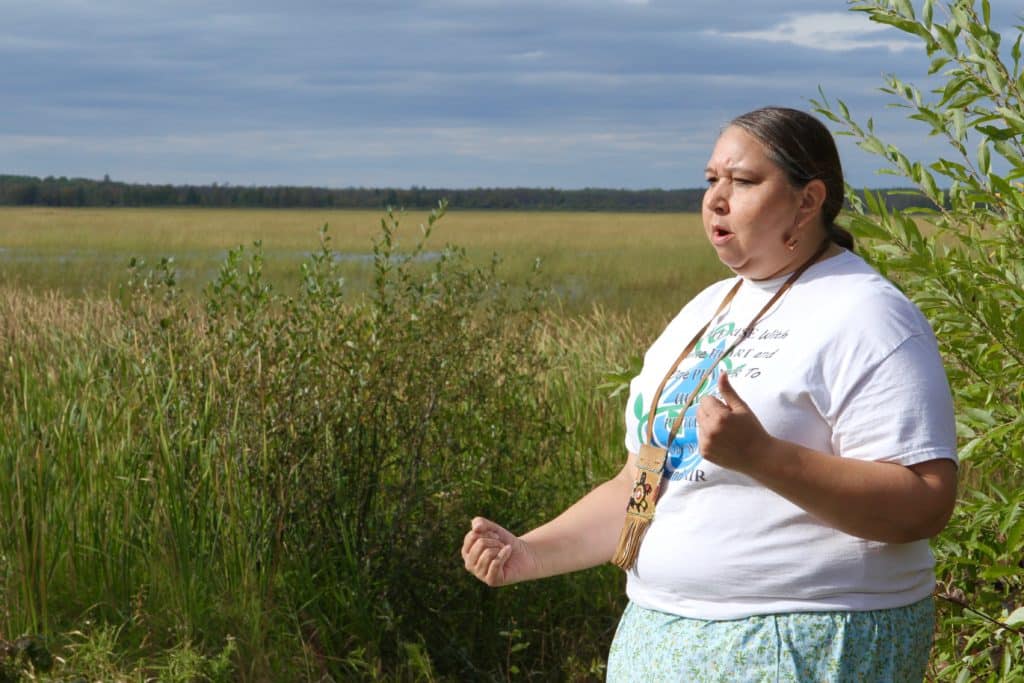
For dinner Saturday night, activist, economist, environmentalist and writer Winona LaDuke and some of her team from Honor the Earth cooked a meal for the community, serving pasta with buffalo sauce, hemp pesto from her farm, and a wild rice dish, among other delicious and nourishing dishes. She later offered words of wisdom and encouragement to the community about planting our feet firmly on the ground and standing up for Native people in America, protecting our water, and fighting tooth and nail against these pipelines and multinational corporations.
Nate Taylor, leader of a school language immersion program at Red Lake, spoke to the importance of cultural heritage in maintaining a sense of connection to his community and history, as well as the rest of the living world.
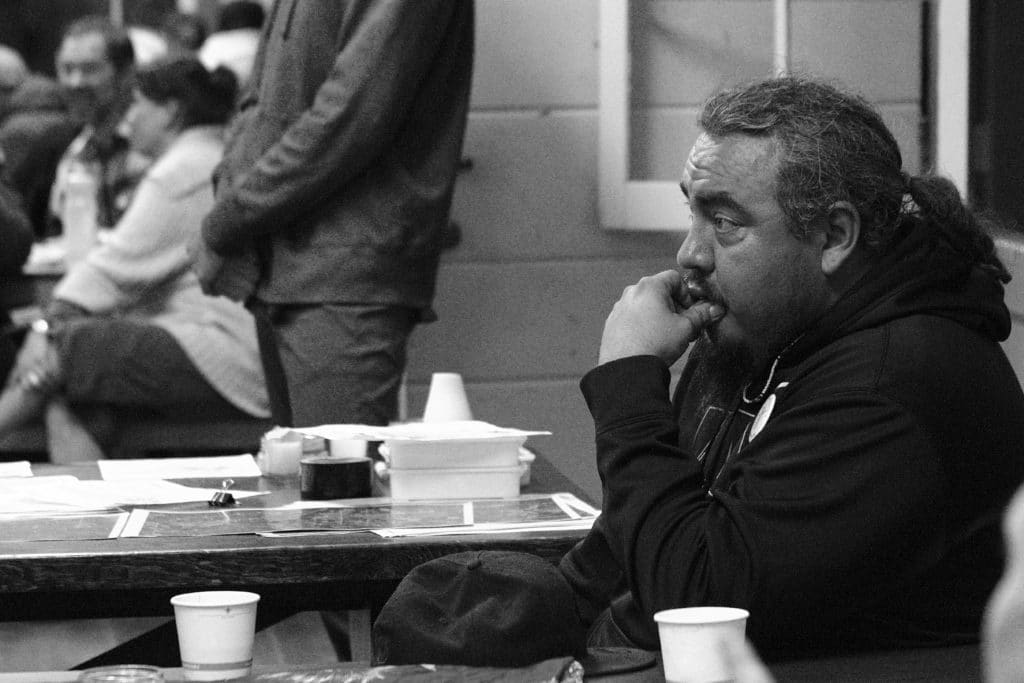
After Nate and Winona spoke, the microphone passed to Annette Klapstein and Michael Foster, who spoke to their experiences as valve-turners, and who encouraged elder white folks to consider their unique positioning to put their bodies on the line for justice with a much lower threat of harm than most others.
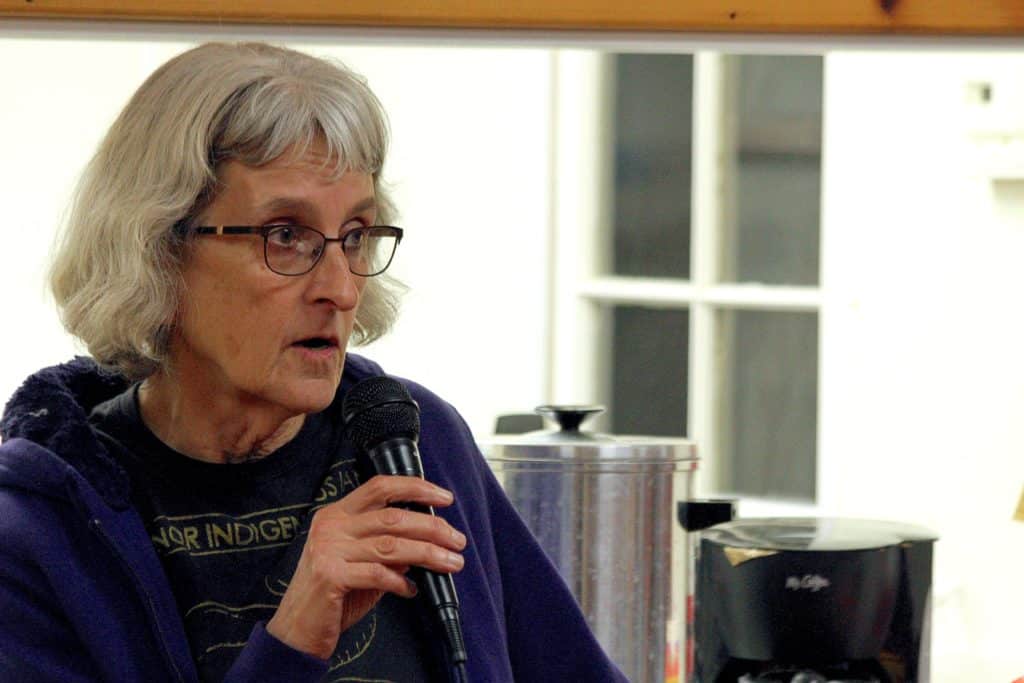
Nina, Nolan, and Naomi Berglund (Oglala Lakota; Northern Cheyenne) then spoke about youth leadership in the movement, and the many forms that can take. Nina offered powerful words about honoring her ancestors with her fight, and fighting for the many generations to come alike.
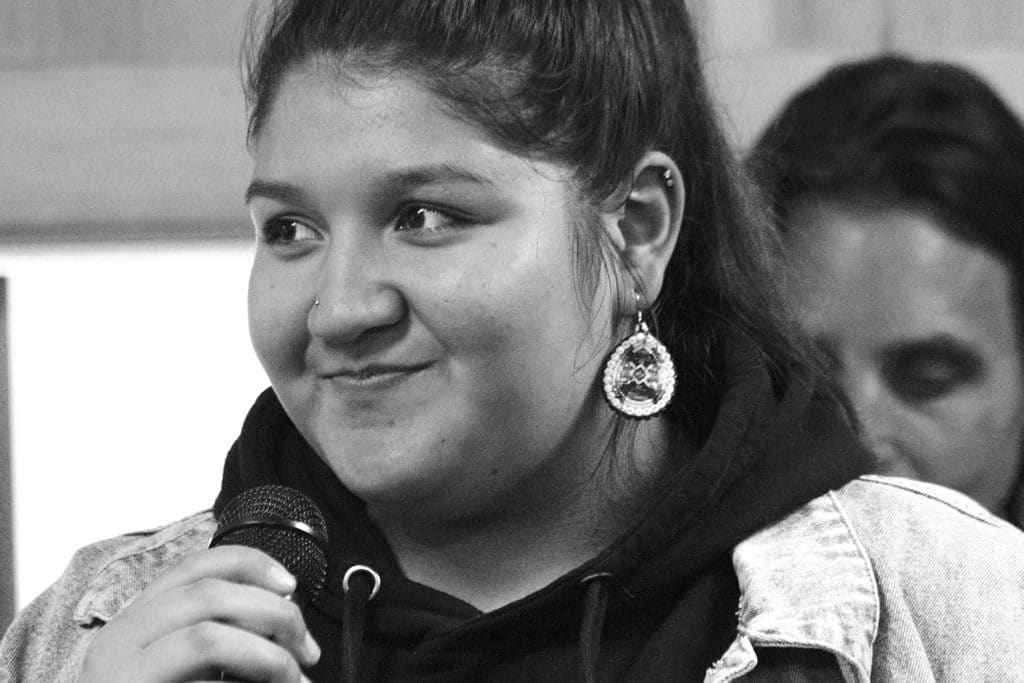
Julia Nerbonne, MNIPL’s executive director, closed out the evening by mentioning to the community that Governor Dayton’s office signed off on our park permits for the weekend. We headed back to our tents and cabins with stomachs full of conviction and strength.
On Sunday morning, we gathered to hold sacred space at the Headwaters of the Mississippi River. A circle of drummers from Leech Lake brought us together at the Lake Itasca visitor center, where participants held signs with messages like “Protect our Earth”, “Respect our Treaties” and “Hold the Line”. Rev. Jim Bear Jacobs (Mohican) invited us to meet the Headwaters, where we gathered around the drummers again. After an opening blessing, Omaha elder, water protector, and leader at Nebraskans for Peace Renee Sans Souci led the group in a sacred water ceremony.

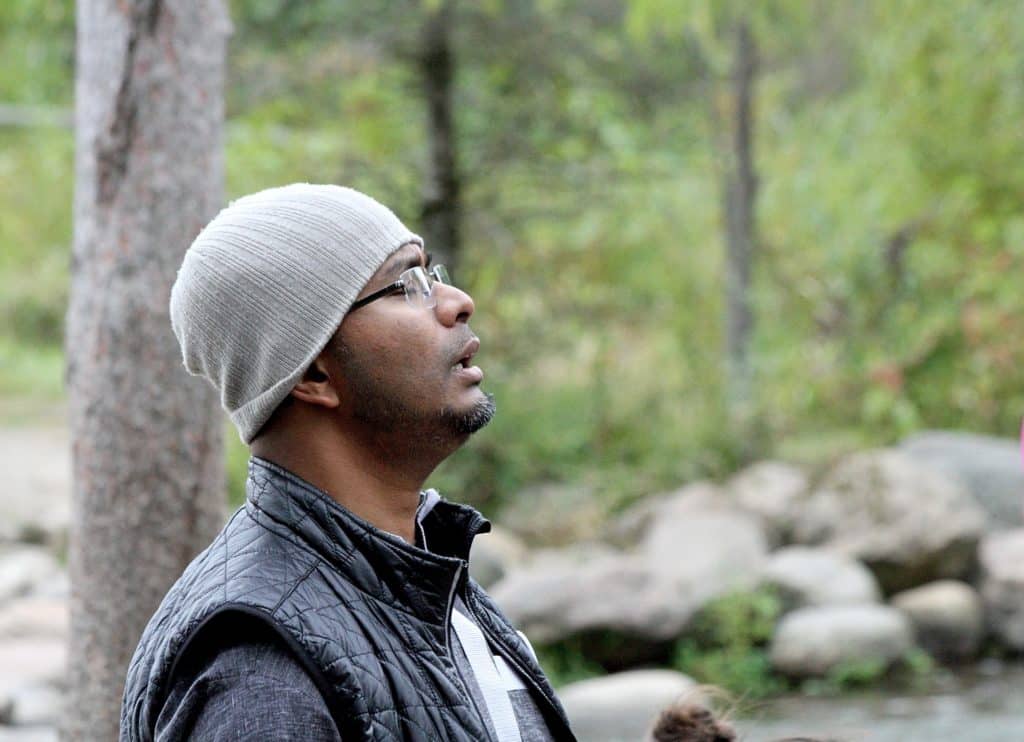
Rev. Curtiss Paul DeYoung read from the Gospel of Mark about the importance of water in the story of Jesus’ spiritual becoming.
UCC Minister Rev. Rebecca Voelkel and Interfaith Minister Thomas Schmidt offered thoughts and prayers on the sacredness of all life. Youth water protectors and activists Nina and Nolan Berglund led a closing offering of tobacco to the water.
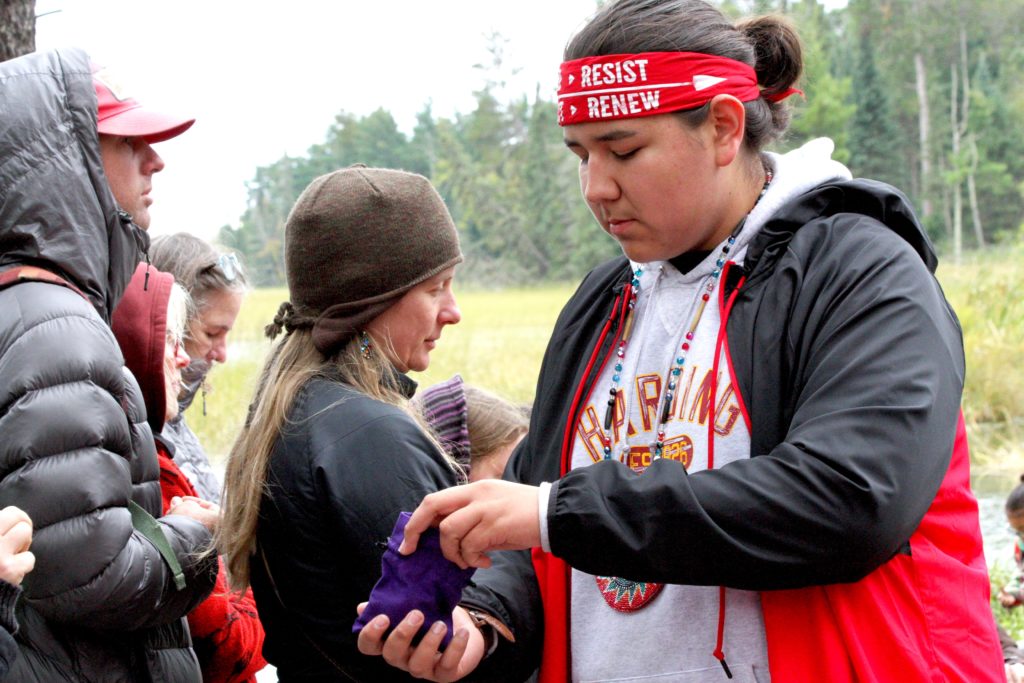
One unifying message resounded throughout and across the sacred space we held together Sunday: Water is Life.
For some, this weekend was a beginning, an awakening to the gravity of that teaching. For others it was a continuation of a generations-long fight to protect the sacred. After the vigil’s closing, reflections and murmurings from the crowd echoed Winona’s message from dinner the previous evening. No matter who you are or where you come from, the time to fight is now.
